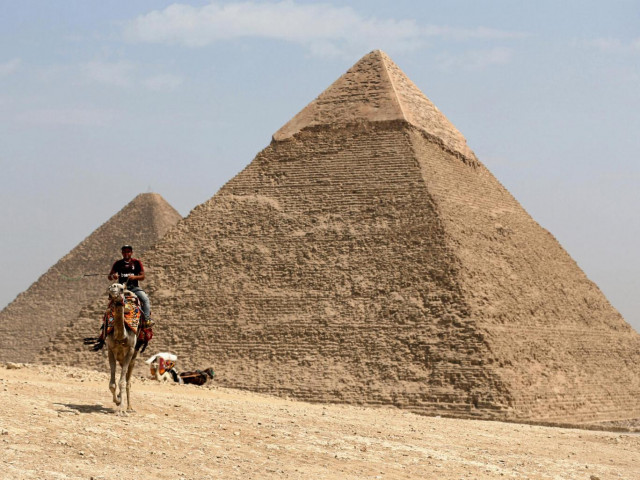Another development in Giza pyramid mystery: new evidence could reshape history as we know it
Italian researchers claims about structure under Giza's pyramids, suggest a lost civilization existed 38,000 years ago

Italian researchers have presented new claims suggesting a hidden city beneath Egypt’s Giza pyramids, which, if confirmed, could dramatically alter our understanding of human history.
The team, led by Dr. Mei, recently reported findings of shafts and chambers deep under the Khafre pyramid, which they believe are 38,000 years old. They also propose that the Giza complex, traditionally believed to be constructed about 4,500 years ago, was actually built by a pre-existing civilization around 12,000 years ago. According to their theory, this civilization was destroyed by a “divine flood” caused by an asteroid impact, leaving only the pyramids as remnants of a larger “megastructure.”
One of the key pieces of evidence cited by Mei is water erosion seen on stones near the Great Pyramid’s entrance. He suggests this indicates the pyramid was once submerged in ancient times. Additionally, salt encrustations found inside the Great Pyramid support the idea that ocean water flooded the Giza Plateau. Dr. Zahi Hawass, Egypt’s former Minister of Antiquities, dismissed these claims, attributing the erosion to natural weathering processes.
The team also speculated that the shafts and chambers could be part of a long-lost city, referencing the discovery of chamber-like structures over 4,000 feet underground. This theory has yet to undergo peer review, and the research methods, including seismic waves and radar, have been criticized by Hawass as unscientific.
Further, the researchers believe that the Giza pyramids might predate Göbekli Tepe, the oldest known man-made structure, suggesting the pyramids were built tens of thousands of years earlier than previously thought. Despite skepticism from some experts, including Professor Lawrence Conyers, who considers these claims “outlandish,” the researchers argue that the construction of the pyramids requires a more plausible explanation than traditional theories.





















COMMENTS
Comments are moderated and generally will be posted if they are on-topic and not abusive.
For more information, please see our Comments FAQ